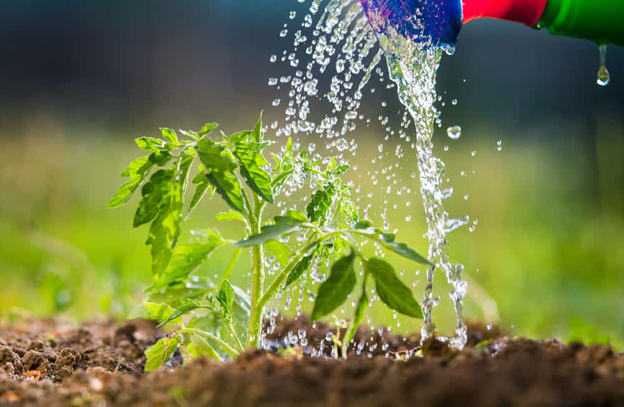Introduction
Embarking on the journey of growing your tomatoes can be a profitable venture. The fruits of your labor can translate into succulent, homegrown produce that provides a taste beyond compare. Like all plant species, tomatoes have specific care requirements that must be met to ensure healthy growth and a successful harvest. Watering is a significant factor in these care routines, requiring careful attention. This blog post is designed to offer a detailed guide on the art of watering tomato plants, enabling your gardening efforts to bear the juiciest fruits.
Understanding the Importance of Proper Watering
Interestingly, tomatoes comprise around 95% water, making adequate and consistent watering crucial for their development. Water plays a pivotal role in various plant functions, including photosynthesis – the process by which plants convert sunlight into food, nutrient uptake from the soil, and other physiological processes vital to plant health and productivity. When executed correctly, watering can avert several commonplace problems, such as blossom end rot and the cracking of the tomato skin.
Conversely, inconsistent or excessive watering routines can result in undesirable outcomes, such as the onset of diseases and a notable reduction in the quality of the fruit. Overwatering can create an environment conducive to the growth of fungi and bacteria that can harm your plant; hence striking the right balance is paramount.
Determining the Water Requirements of Tomato Plants
As a general guide, tomato plants typically require approximately 1-1.5 inches of water weekly. However, this guideline is flexible, as various factors can influence the plant’s water needs. Factors such as the local climate, the soil type in your garden, and the current growth stage of the plant all contribute to the quantity of water required. For instance, during scorching, dry spells or when the plant is in its fruiting phase, its water demands may escalate.
In addition to the water quantity, the watering depth is equally crucial. Deep watering spurs the plant to grow a robust root system, enhancing its resilience and facilitating a more efficient absorption of nutrients from the soil. Therefore, aim to water your plants deeply, saturating the soil to a depth of approximately 6-8 inches. This quenches your plant’s thirst and builds a stronger foundation for healthier growth and abundant fruit production.
When to Water Tomato Plants
The best time to water tomato plants is early in the morning. This allows the water to reach the roots before the day’s heat leads to evaporation. It also helps the plant to withstand the heat throughout the day. Avoid watering in the evening, as this can leave the plants damp overnight, leading to fungal diseases.
Step 1: Direct the Water to the Roots
When watering, aim to get the water directly to the roots. Avoid wetting the leaves, as this can lead to leaf diseases. You can use a watering can with a long spout or a soaker hose to do this.
Step 2: Water Deeply
As mentioned, deep watering encourages the growth of a robust root system. You can check how deeply you’ve watered by sticking your finger or a stick into the soil.
Step 3: Maintain Consistent Moisture
Try to keep the soil consistently moist but not waterlogged. The soil should be damp like a wrung-out sponge, not soggy.
Mulch can be a great ally in maintaining consistent soil moisture. Adding a layer of organic mulch like straw or wood chips around your tomato plants can slow evaporation, keeping the soil moist for longer. Mulch also helps in controlling weeds and maintaining soil temperature.
Monitoring Your Plants for Watering Issues
Monitor your plants regularly to catch any watering issues early. Wilting leaves can indicate underwatering, while yellowing leaves or waterlogged soil suggest overwatering. Adjust your watering practices as necessary based on these observations.
Conclusion
Watering is one of the most critical aspects of tomato care. Proper watering promotes healthier plants and improved fruit production and can help prevent common plant problems. Remember to water deeply and directly to the roots, maintain consistent moisture, and use a mulch to conserve water. With these strategies, you can look forward to a bountiful harvest of juicy, homegrown tomatoes.















